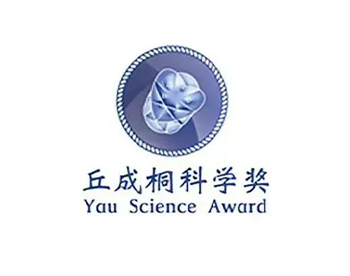2025 Thermo Fisher Scientific Junior Innovators Challenge — A Premier STEM Competition for Grades 6–8
For U.S. middle school students in grades 6–8, the Thermo Fisher Scientific Junior Innovators Challenge (JIC) is one of the best opportunities to take a first step into STEM research. As a competition equivalent in prestige to the Regeneron ISEF, JIC is specifically designed for younger students, offering them an early platform to explore scientific inquiry. Founded in 2010 (formerly known as the Broadcom MASTERS), the Challenge has become a globally recognized stage for young innovators. The 2025–2026 season is now open for applications—here’s everything you need to know.
1. Key Background: Understanding the Competition
JIC is organized by the Society for Science and sponsored by Thermo Fisher Scientific, a global leader in science services. Although it differs from ISEF—which targets high school students—the JIC maintains equally rigorous standards while tailoring its evaluation to middle school learners, focusing on curiosity, creativity, and foundational research potential.
In 2023, 1,828 students from 49 U.S. states, Guam, and Puerto Rico advanced to the national competition, demonstrating the program’s broad reach and popularity. For middle schoolers, participating in JIC not only builds early research experience but also helps prepare for advanced competitions such as ISEF.
2. 2025 Competition Timeline: Important Dates
The JIC competition runs over several months, beginning with regional nominations and ending in the national finals. Here are the key milestones to note:
- Application Opens: February 1, 2025 – Nominated students can begin submitting online applications.
- Deadline: June 13, 2025 – All materials must be submitted by this date. Late submissions will not be accepted.
- Top 300 Announcement: September 3, 2025 – The official list of top 300 students is published online.
- Top 30 Finalists: September 17, 2025 – Thirty finalists are selected from the top 300.
- Finals Week: October 24–29, 2025 – Finalists gather in Washington, D.C. for the national competition.
- Project Exhibition: October 2025 – Final projects are publicly showcased, and award winners are announced.
Most affiliated regional fairs take place between January and April—students should plan projects early to secure a nomination.
3. Eligibility and Entry Format: Who Can Participate
JIC operates on a nomination-based system rather than open registration. The core eligibility criteria include:
Who Can Apply:
Only U.S. or U.S. territory students in grades 6–8 who place within the top 10% of their affiliated regional science fair are eligible for nomination. Being nominated itself is a mark of excellence, indicating a top-tier research project at the middle school level.
Team or Individual:
Projects may be submitted individually or in teams of up to three members. However, each team member must submit a separate online application. All written responses, except for the shared project summary, must be completed independently. Judges evaluate each application individually, meaning some teammates may advance while others do not.
All participants must be able to attend Finals Week and demonstrate strong English proficiency, as all communication, documentation, and presentations are conducted in English.
4. Application Materials and Project Guidelines
Once nominated, applicants must complete a detailed submission that adheres to all competition requirements. Attention to detail can significantly impact advancement.
Required Materials:
- Online Application: Includes project description, research background, methods, results, and individual contributions.
- Signed Permission Forms: Downloaded from the official website, confirming project compliance.
- Visual Materials: Up to two pages (PDF), containing only charts, graphs, and photos with brief captions. No identifiable faces, hyperlinks, or embedded media are allowed.
- Supporting Documents: Optional materials such as judge comments or certificates from regional fairs.
Compliance Rules:
Certain types of research require prior approval:
- Human Subjects: Surveys, interviews, or prototype testing require IRB (Institutional Review Board) approval.
- Vertebrate Animals: Projects involving vertebrates must have IACUC (Animal Care Committee) approval.
- Hazardous Agents: Home culturing of microorganisms is prohibited. Studies involving recombinant DNA or animal tissues must be done in certified facilities.
- Chemical and Physical Hazards: Work must be supervised by qualified adults, and DEA-controlled substances are forbidden.
5. Judging Criteria: What Judges Look For
JIC uses a 100-point evaluation system that balances scientific rigor with age-appropriate expectations:
- Creativity & Innovation (30 points): Originality of the idea, novelty of the approach, and potential impact.
- Scientific Thought (30 points): Strength of background research, experimental design, data accuracy, and logical conclusions.
- Thoroughness (20 points): Completeness of documentation, including data logs, results, and process notes.
- Practical Value (20 points): Real-world relevance and potential applications of findings.
Team projects are also judged on collaboration and division of work (10 points), while individual entries emphasize personal understanding and potential (10 points).
6. Awards and Recognition
JIC offers recognition and prizes across multiple levels, rewarding both participation and excellence.
Nominees:
Receive a certificate recognizing placement among the top 10% of U.S. middle school research projects.
Top 300 Broadcom MASTERS Alumni:
Each receives a $125 cash award from DoD STEM, a digital subscription to Science News, a Wolfram|Alpha license, and other branded items. Teachers receive gifts and digital subscriptions.
Top 30 Finalists:
Each finalist receives $500 and an all-expenses-paid trip to Washington, D.C., with one parent or guardian. Additional major awards include:
- $25,000 Thermo Fisher ASCEND Grand Award
- $10,000 Category Awards (Lemelson Invention Award, STEM Talent Award, Health Promotion Award, and others)
- STEM Subject Awards: Winners in math, science, technology, and engineering receive scholarships up to $3,500 and iPads.
- Team Awards: Sponsored by TIES, with gift cards for science supplies.
Schools with finalists also receive a $1,000 STEM grant from Thermo Fisher Scientific.
7. Preparation Roadmap: Four Steps to Success
Step 1: Choose a Strong Topic
Select a project that combines curiosity with feasibility—something practical and creative. Seek teacher or mentor input before finalizing your idea.
Step 2: Conduct Systematic Research
Start with literature reviews, design experiments, collect and record data carefully, and maintain a detailed research log.
Step 3: Write a Clear Report
Organize your report using the “Background – Purpose – Methods – Results – Conclusion” structure. Use concise language and data visualization (charts or graphs).
Step 4: Compete in a Regional Fair
Find your local affiliated fair through the Society for Science website. Submit your project according to their requirements and aim for the top 10% nomination.
8. FAQs: Common Questions
Q: Can international students apply?
A: Currently, the competition is open only to U.S. and U.S. territory students who qualify through an affiliated fair.
Q: Must the project involve experiments?
A: Not necessarily. Engineering designs, data analysis, or social science research within the STEM framework are all acceptable.
Q: Can visual materials include photos of posters?
A: No. Photos of project boards or posters are not allowed. Only charts, graphs, and images directly illustrating the project are acceptable.
Q: Do all team members advance together?
A: Not always. Each application is evaluated individually; some team members may advance while others do not.





